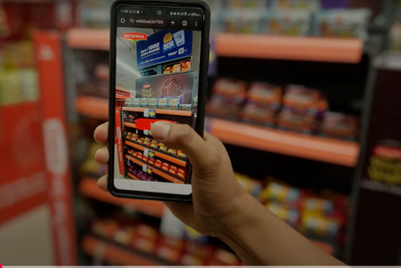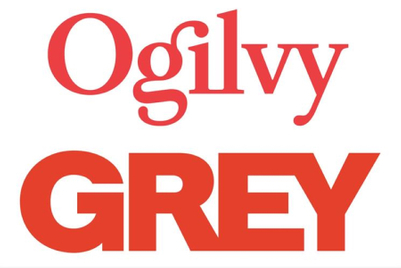
The Eye on Asia 2010 retail findings were based on in-home and online conversations and shop-alongs with over 2,100 shoppers from eight countries namely Australia, China, India, Indonesia, Japan, Korea, Malaysia and Vietnam. The key focus was on young singles and couples between the ages of 18-24 years, and mothers with kids between 4-12 years. The analysis was drawn from shopping experiences in hypermarkets or supermarkets, pharmacies or drugstores and provision shops or mom-and-pop stores, with a focus on categories encompassing Over-The-Counter (OTC) supplements and treatments, health food and drinks, beauty and snacks. In a conversation with Arati Rao, Bindu Sethi, chief strategy officer of Grey Asia-Pacific, explained a few of the insights on shopping mindsets across the Asia Pacific region, including India, and its implications for marketers here.
Two-thirds of the final purchase choices are made in-store. “At a category level [see Table 1], for hypermarkets/supermarkets, 48% decide what they’re going to buy after entering the store. Of the 52% who know what they’re going to buy before entering the store, 73% of the brand choice is actually made inside the store. So that just reveals how important the store is, and your brand can lose or win just at the store. You can put your brand in the consideration set through various media but you can’t be sure it’ll get picked up unless you do something for it in the store.
For Indians, one-thirds of final purchase choices are made in-store, more so in hyper/super markets. To my mind, this doesn’t mean that Indians are more decisive. This reveals the transition of the retail sector in India.
Most of our purchase decisions are made at the beginning of the month when a list is made, you go to a retailer and submit it and he gives it back to you. There is that in-front-of-the-counter and behind-the-counter syndrome; they’re not in a space where they’re moving around and making their own choices. It’ll be interesting to monitor this over the next few years to see how it’s changing.”

Table 1
Asian shoppers take time to study products in-store “The consumer is increasingly looking at the shopping space to get informed about products and categories [see Table 2]. I feel that the retail space for the Indian consumer is what the digital space is to the developed markets. Where does the Indian housewife go to get informed? There is only so much online. And now there are so many categories coming in, she wants to get educated about these categories. The retail space is a very fertile space for her.
We heard this across the emerging markets, “I get to taste, to try, to ask and find out more.” The Indian consumer loves the pack. They read the pack to find out lots of information. If you go to a provision store, the shopkeeper isn’t going to give you the time to read, you’re blocking space. Whereas in a hypermarket, they have all the time to compare Colgate with whatever.
Comparisons aren’t just on price alone. Asians are looking at product specifics and other information.
Shoppers need to feel smarter when they’re making choices and this is across the board. Asians spend 37 minutes in store; for Indians, it’s 36 minutes and, at 83 minutes, Indonesians seem to be living in their stores.”

Table 2
Information drives choice. “Asian shoppers are always looking to increase their brand knowledge. In developed markets, the level of consumerism has come to a bit of a stalemate, though it is high for pharmacies. A store is where you get educated and marketers will do well to look at it that way and design how they’re going to communicate with the consumer there. Agencies need to have a separate expertise on how to design communication for consumers in the store.
A 30-second commercial does another job and a communication in-store does quite another. The whole impact and brand image doesn’t necessarily need to be in the store, that’s not what’s driving choice. What’s driving choice is information. In emerging markets, the desire for information is high even in provision stores.
For 40-50% of people, buying in these categories is a routine purchase. But there is a bulk of 50% of the people who will decide on the basis of what is the information: promotions, demonstrations and advice. Increasingly, in today’s worlds, it’s better to influence 100 consumers to get them to adopt a product and get their word-of-mouth than provide this kind of imagery or sprinkle of information all throughout.”
Advice is appreciated as long as the staff is non-intrusive. “For the longest time, we’ve been sold. We go to the provision store, and the store guy pushes a product to you because he gets a big margin. Today for India and Asia [see Table 3], we’re saying, “Give me assistance, but don’t overcrowd me.” Indians, in particular, are looking at the packaging, so how you design the pack is very important.”

Table 3
Almost half the promotions done in store are wasted. “This was across the board [see Table 4]. The Indian consumer tells us mostly, “I don’t want to waste. So don’t give me one-on-one free.” Usually, for marketers, either you want to sell a particular thing more or it’s a joint decision between brand managers. [A promotion] It’s not a decision that is driven out of the consumer, and that’s something the consumer has cottoned on to.”

Table 4
Asian shoppers visit stores not just for products, but also for the experience. “For the Indian consumer, it is exciting to shop, unlike the developed market. A lot of Indian consumers enjoy going to a hypermarket even though they are not habituated to it, they go there to experiment and see what’s going on, what’s new and available. Even that habit will change eventually.
Descriptors like ‘Fun’, ‘Happy’ have figures like 71%, 70% in India. The most interesting is ‘Adventurous’ because that’s where they’re trying to get new products [see Table 5]. Imagine what marketers should be able to do with them. This is hugely revealing for the snacks and food market. The Japanese consumer says, “I walk into my supermarket and decide what I’m going to have for dinner.” The Chinese home food is very limited. He or she says, “When I go home and look at what’s cooked for dinner, that’s the time I walk into my provision store.” A National Food Security study suggests the main Indian meal has become simple now, perhaps because housewives are busy. Marketers could come up with a whole slew of snacks to go with the dal chawal at home.”

Table 5
We don’t listen to what the consumer really wants. “‘I like reading the ingredients and product benefits before I buy it – India and Indonesia’. In India, 36% are looking for information on products and packaging [see Table 2]. For the first time, the consumer has such a wide repertoire. In so many categories, her main meal is collapsing, she needs to give supplements to her kids because of that, her beauty regimen is becoming wider, and she doesn’t know if she’s making the right choice. Good retail data always ties up with a very deep understanding of consumer behaviour. In snacks, in particular, Indians want to know there’s nothing wrong, no added MSG etc. Many of the consumers revealed they knew exactly what goes into Maggi.”



.jpg&h=268&w=401&q=100&v=20250320&c=1)
.jpg&h=268&w=401&q=100&v=20250320&c=1)






